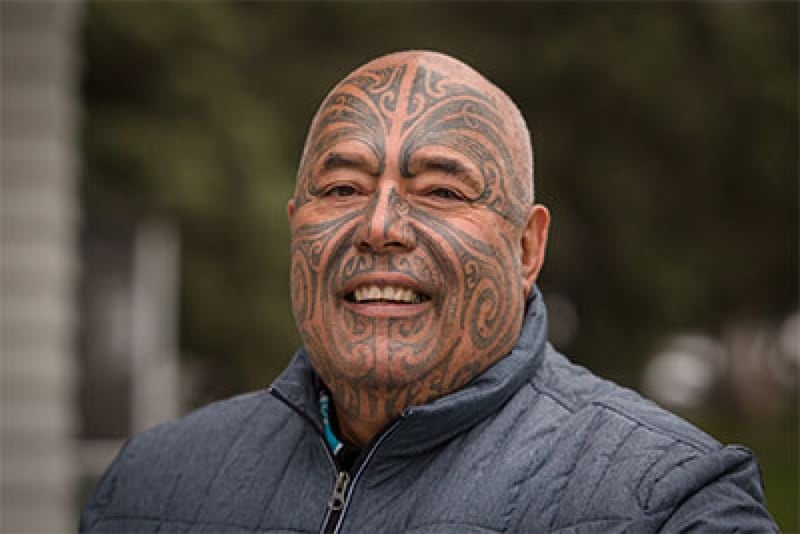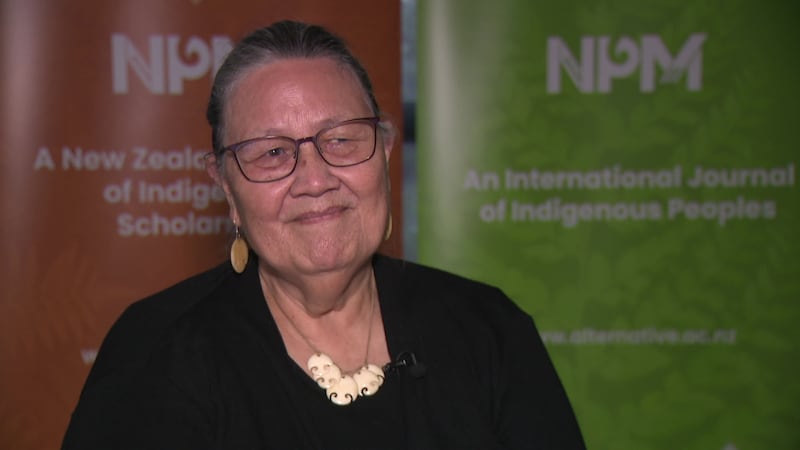A cultural study on kaumātuatanga specifically in Ngāti Whakaue has been completed, with the iwi receiving the research at Te Papaiouru Marae today.
The study, Kaumātua Futures, was undertaken by Ngā Pae o te Māramatanga in partnership with The Family Centre social policy research unit.
Lead researcher, Dr Teorongonui Josie Keelan (Ngāti Porou, Ngāti Awa, Tūhoe) and her team worked with 40 Ngāti Whakaue kaumātua for three months.
They used three methods to gather information: multiple wānanga, in-depth interviews with 11 participants, and some researchers followed two kaumātua for a week.
“It’s really focused on how one becomes a kaumātua, the sorts of support a kaumatua needs to fulfill his or her responsibility,” Keelan told Te Ao Māori News.
One of the kaumātua who participated, Rukingi Haupapa (Ngāti Whakaue), said the rangahau was giving Ngāti Whakaue a chance to find a path that “yeah, we still fit”.
Next generation kaumatua

“There will be a time where you have a lot of the 30 and 40-year-olds now, who went through kōhanga, went through kura, went to whare wānanga, and all the rest.
“By the time they are 40 and they are the kaumātua, that hopefully [they know] what that kaumātuatanga should be.
“Right at the moment we’ve got all these shades of what everybody thinks a kaumātua is and I think the many voices and experiences each of us had, that’s why you get the real mix of all of it.”
The research was handed over to the iwi earlier today at Ohinemutu.
Keelan said the research wasn’t telling Ngāti Whakaue what to do but instead provided a pile of information they could use to grow.
“It’s not really for us to say to Ngāti Whakaue, you need to do something about that, it’s our koha to Ngāti Whakaue to take the information that is within the report, to then respond to it or to take some actions as a result to reading the report.”
Up to the iwi
Haupapa said it was up to the iwi to preserve and uphold kaumātuatanga for Ngāti Whakaue.
“Hopefully, within all of that trust, we can find a path that can keep kaumatuatanga alive and well.
“In the future the next wave of kaumātua now have something to measure against. This is what it is now, this is what it used to be and does this still apply?
“I just think that rangahau, if we trust each other, that can be a really useful tool,” said Haupapa.
The research also found some shared concerns kaumātua had, especially around tikanga and kawa.
According to Keelan many, particularly the men, had worried about the marae becoming mātao due to people not coming as much.

“A lot of tangi are now being held at people’s homes rather than the marae. A good reason for that is the cost.”
Another issue was around technology, specifically around broadcasting a tangi online for relatives far away.
“They were really concerned that was changing the nature of tikanga and there was a need to have conversation and wānanga about how one behaves with tikanga related to online intrusion into events on the marae,” Keelan said.
Kaumātua also felt isolated by technology after they didn’t have the confidence, skills or money to use it.
While feeling excluded, they also felt their voices and knowledge was being slowly diminished, feeling their service was often not recognised or valued by younger generations.
No matter how big or small the event was at the marae kamātua always turn up but they felt “very tired” trying to maintain the mana of their hapū, iwi and whānau.
But many said their greatest joy was seeing mokopuna attend kōhanga, kura kaupapa, wharekura and reo wānanga to learn reo Māori.



